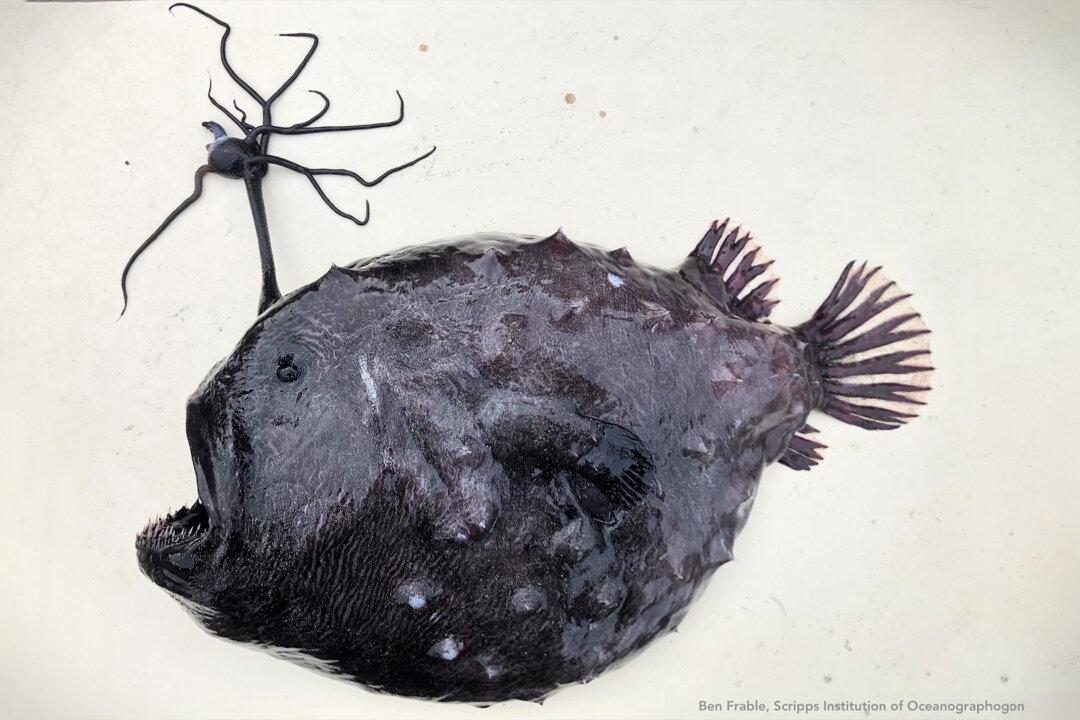A mysterious black blob of a fish—featuring terrifying spiny flesh, rows of long needle-sharp teeth, and strange alien-like appendage growing out of its head—gave lifeguards a start after washing up in Encinitas, California, in early December.
The exceedingly rare specimen, called a Pacific footballfish, one of the largest species of anglerfish, was found by a surfer at Swami’s Beach, who handed it to lifeguards, who in turn passed it to oceanographic scientists for further study.






